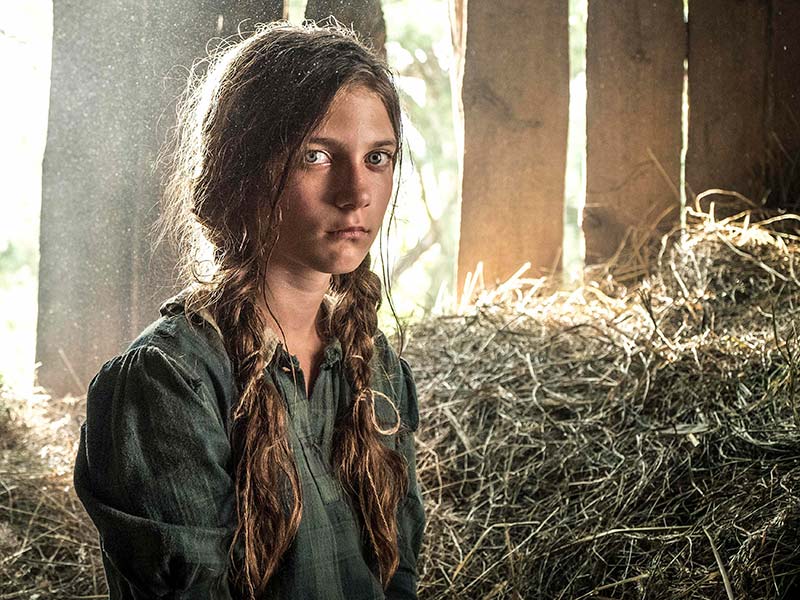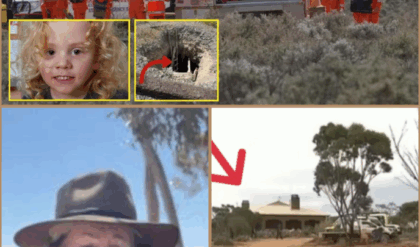“My Name Is Sara” — A Haunting Portrait of Survival, Identity, and Courage Amid WWII’s Darkness
In the long canon of World War II dramas, few films manage to balance the brutality of survival with the tenderness of humanity quite like My Name Is Sara (2019). Based on a true story, this gripping and deeply emotional film follows the extraordinary journey of a 13-year-old Jewish girl who must erase her identity to stay alive after her family is murdered by the Nazis.
Directed by Steven Oritt, My Name Is Sara brings to the screen an unflinching yet compassionate depiction of the human cost of war, reminding audiences that even in history’s darkest moments, hope and courage can endure.
A Story Born from Unimaginable Loss
The film opens in 1942, when Sara Góralnik, a young girl from Poland, escapes into the wilderness after her parents and brothers are killed during the Nazi occupation. Alone, terrified, and desperate to survive, Sara adopts a new name and identity — pretending to be a Christian orphan from another town. Her journey eventually leads her to the remote Ukrainian countryside, where she finds shelter with a farmer, Pavlo, and his wife, Nadya.
The couple takes her in, unaware of her true heritage. Yet even within this fragile refuge, danger lurks at every corner. Nazi patrols, suspicious neighbors, and the unpredictability of wartime alliances keep Sara in constant peril. The tension of her double life—balancing gratitude and fear—creates an atmosphere as suffocating as it is heartbreaking.
Performances That Speak Beyond Words

At the heart of the film is a remarkable performance by Zuzanna Surowy, who portrays Sara with both innocence and unshakable strength. Her portrayal captures the unimaginable weight of a child forced to live as someone else, constantly guarding her every word, movement, and emotion. Surowy’s subtle expressions—her trembling hands, her darting eyes, her quiet defiance—speak volumes about trauma, resilience, and the instinct to survive.
Eryk Lubos and Michalina Olszańska, as Pavlo and Nadya, bring depth and complexity to characters who themselves must navigate moral gray zones. Pavlo’s stoic kindness contrasts with Nadya’s suspicion and jealousy, reflecting the blurred lines between compassion and self-preservation in wartime. Their dynamic with Sara is tense, unpredictable, and at times deeply moving.
Authenticity and Atmosphere
Shot in Poland and Ukraine, My Name Is Sara is visually stunning. Cinematographer Witold Plóciennik captures the haunting beauty of rural landscapes — snow-covered forests, desolate farmlands, and dim candle-lit interiors that evoke both serenity and suffocation. The natural light and subdued color palette immerse viewers in the era, making each frame feel like a living photograph from history.
Oritt’s direction resists the temptation to dramatize violence excessively. Instead, he allows silence, stillness, and the small moments of human connection to carry the emotional weight. This approach gives the story an authenticity rarely achieved in war dramas — the horror is implied, not exaggerated, allowing the audience to feel the fear without being desensitized by it.
Themes of Identity and Humanity
At its core, My Name Is Sara is a story about identity — about what it means to erase oneself in order to survive. Sara must adopt new customs, recite Christian prayers, and hide her Jewish faith even as it defines her sense of self. Every moment is a test: one slip, one hesitation, one wrong word could expose her and lead to death.
Yet amid this fear, the film explores humanity’s enduring spark. Pavlo’s quiet courage, Nadya’s conflicted conscience, and Sara’s unwavering will to live all serve as reminders that goodness can persist even when the world collapses around it. The film doesn’t romanticize survival; it presents it as a constant, grueling act of endurance — both moral and physical.
A Legacy of Resilience

The story of Sara Góralnik is not fiction. After surviving the war, the real Sara immigrated to the United States, where she built a family and shared her story so that future generations would remember. Her testimony inspired the film, serving as both a warning and a tribute — a testament to the strength of those who endured unspeakable cruelty.
In honoring her journey, My Name Is Sara joins the ranks of essential Holocaust narratives that preserve memory through art. Like The Diary of Anne Frank or Schindler’s List, it insists that remembrance is a moral duty — not merely to mourn, but to understand, to feel, and to ensure such horrors are never repeated.
Critical Reception and Streaming Availability
Since its release, My Name Is Sara has been praised by critics and audiences alike for its emotional honesty, stunning cinematography, and powerful performances. It earned multiple festival nominations and has resonated with educators, historians, and viewers seeking authentic portrayals of survival during the Holocaust.
Now available to stream on Amazon Prime Video, the film offers both a harrowing and deeply human viewing experience. For those drawn to true stories of resilience, My Name Is Sara is not just a film — it’s a reminder of the light that refuses to die, even in the darkest times.



